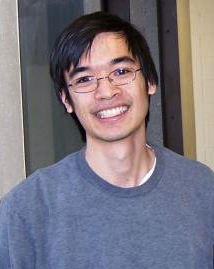It’s time to review some terms you hear in math lectures. If you are not doing well in math, it’s probably because of miscommunications and not for any other reason.
BRIEFLY: I’m running out of time, so I’ll just write and talk faster.
BRUTE FORCE: Four special cases, three counting arguments, two long inductions, and a partridge in a pair tree.
BY A PREVIOUS THEOREM: I don’t remember how it goes (come to think of it, I’m not really sure we did this at all), but if I stated it right, then the rest of this follows.
CANONICAL FORM: 4 out of 5 mathematicians surveyed recommended this as the final form for the answer.
CHECK FOR YOURSELF: This is the boring part of the proof, so you can do it on your own time.
CLEARLY: I don’t want to write down all the in-between steps.
ELEGANT PROOF: Requires no previous knowledge of the subject, and is less than ten lines long.
FINALLY: Only ten more steps to go…
HINT: The hardest of several possible ways to do a proof.
IT IS WELL KNOWN: See “Mathematische Zeitschrift”, vol XXXVI, 1892.
LET’S TALK THROUGH IT: I don’t want to write it on the board because I’ll make a mistake.
OBVIOUSLY: I hope you weren’t sleeping when we discussed this earlier, because I refuse to repeat it.
ONE MAY SHOW: One did, his name was Gauss.
PROCEED FORMALLY: Manipulate symbols by the rules without any hint of their true meaning.
PROOF OMITTED: Trust me, it’s true.
Q.E.D. : T.G.I.F.
QUANTIFY: I can’t find anything wrong with your proof except that it won’t work if x is 0.
RECALL: I shouldn’t have to tell you this, but for those of you who erase your memory after every test, here it is again.
SIMILARLY: At least one line of the proof of this case is the same as before.
SKETCH OF A PROOF: I couldn’t verify the details, so I’ll break it down into parts I couldn’t prove.
SOFT PROOF: One third less filling (of the page) than your regular proof, but it requires two extra years of course work just to understand the terms.
THE FOLLOWING ARE EQUIVALENT: If I say this it means that, and if I say that it means the other thing, and if I say the other thing…
TRIVIAL: If I have to show you how to do this, you’re in the wrong class.
TWO LINE PROOF: I’ll leave out everything but the conclusion.
WITHOUT LOSS OF GENERALITY (WLOG): I’m not about to do all the possible cases, so I’ll do one and let you figure out the rest.
Please use the comment form to share your own commonly used words in your math lectures.
Source:









